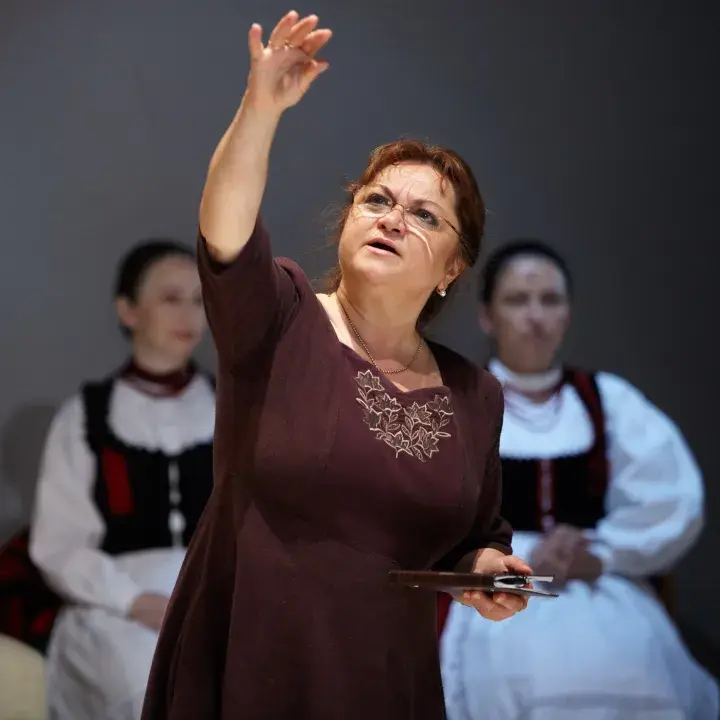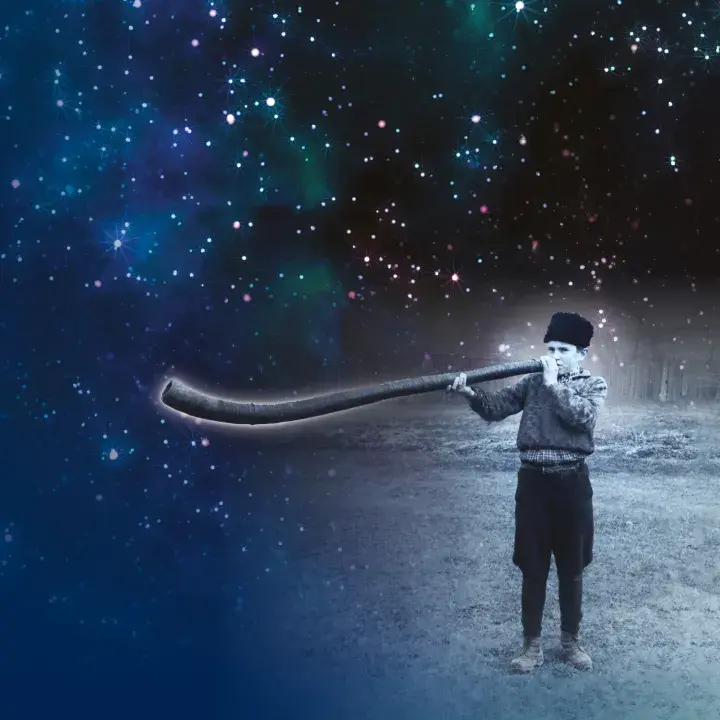The Fly, Peacock Competition held in 1969-70 and the Dance House Movement starting in 1972 created a national trend both in interior design and fashion. One of the most important cult places was Kassák Club. In addition to certain types of blouses and shirts available in folk art stores, folk-inspired clothing also appeared in the state-owned department stores. It became fashionable to use homespun, woven, and blue-dye fabric for clothing and home textiles.
In the beginning, the dancers’ garments were influenced by the hippie movement. Tight jeans were combined with folksy pieces (peasant linen and blue-dyed shirt, vest, scarf for the neck rather than the head, knitwear from Szék, etc.), indicating that they loved not only contemporary fashion but also the Dance House and, with it, folk music, folk art and poetry. Only the most devoted were dressed in an entirely traditional attire, and they would only put on these complete costumes on special occasions.
In the 1970s, 80s and 90s, the vast majority of Dance House people wore garments corresponding to the current fashion together with original accessories, made now more and more by folk artisans. On the principle of matching the old and today's garments, some dressing styles evolved following certain leading personalities of the Dance House Movement. It also served as an indication within the Dance House subculture itself regarding a given person’s taste and attitude towards folk traditions.
From the beginning of the 1970s, all young people in socialist Hungary tried to acquire jeans, which was no easy task due to the estranged relationship between socialist and capitalist countries. The young people of Budapest and the big cities managed to do so earlier, which is why most of the Dance House people in Budapest had jeans, while the young people of Jászberény, for example, wore pants reminiscent of the elegant garments of dance schools. As a result of the shortage of goods in socialist countries, many also wore home-made clothes. Dance House people found some types of clothing available in folk art stores too souvenir-like, so they preferred to acquire original pieces at the Pécs fair or "over" in Transylvania. Due to the interest generated by the Dance House Movement, more and more people from the villages of Szék and Kalotaszeg regularly came to Budapest to sell their wares. A common accessory was the woven Szék shoulder bag. Dance House people could be recognised, if nothing else, by their shoulder bags.
After the change of regime in 1989, and especially at the very end of the millennium, the ever-increasing presence of globalisation, the influence of world music can be observed not only in the repertoire of bands and singers but also in clothing. The Hungarian folk characteristics were dissolved and mingled with the music and costumes of oriental, African, Indian and Latin origin.


